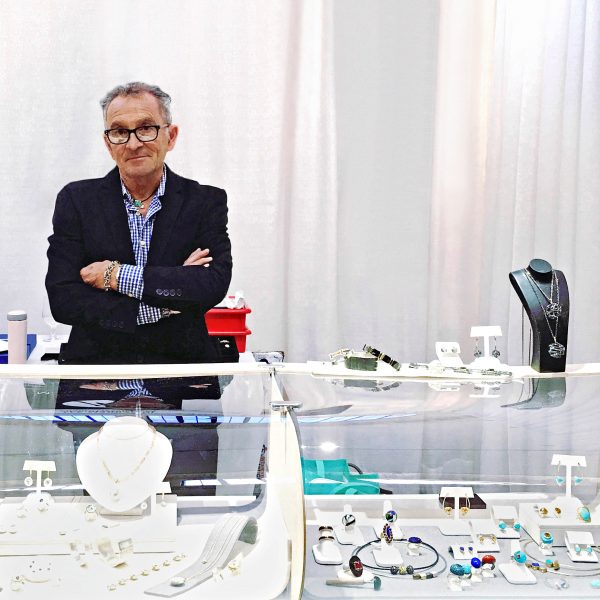
Lee Angelo Marraccini runs in two separate worlds.
Since 1999, Marraccini has owned Angelo, a contemporary jewelry gallery in Charlottesville, Va. During that same 18-year period, Marraccini has also participated in five to six art fairs each year, the continuation of an endeavor he first began in the 1970s.
For Marraccini, trading his brick-and-mortar existence for an art show booth has provided him a personal touch point with the marketplace, spurred the creation of designs, and generated new business.
“I can sell a lot of pieces at a fair that would take me a long time to sell in Charlottesville,” says Marraccini, whose original creations range in price from $300 to $7,000.
As summer and fall bring an array of festivals and fairs to communities across the United States, jewelers—particularly those claiming their own designs—might consider following Marraccini’s lead. With the swelling interest in handmade, artisanal goods, such events present a worthwhile branding opportunity and a compelling opportunity to showcase work to new audiences.
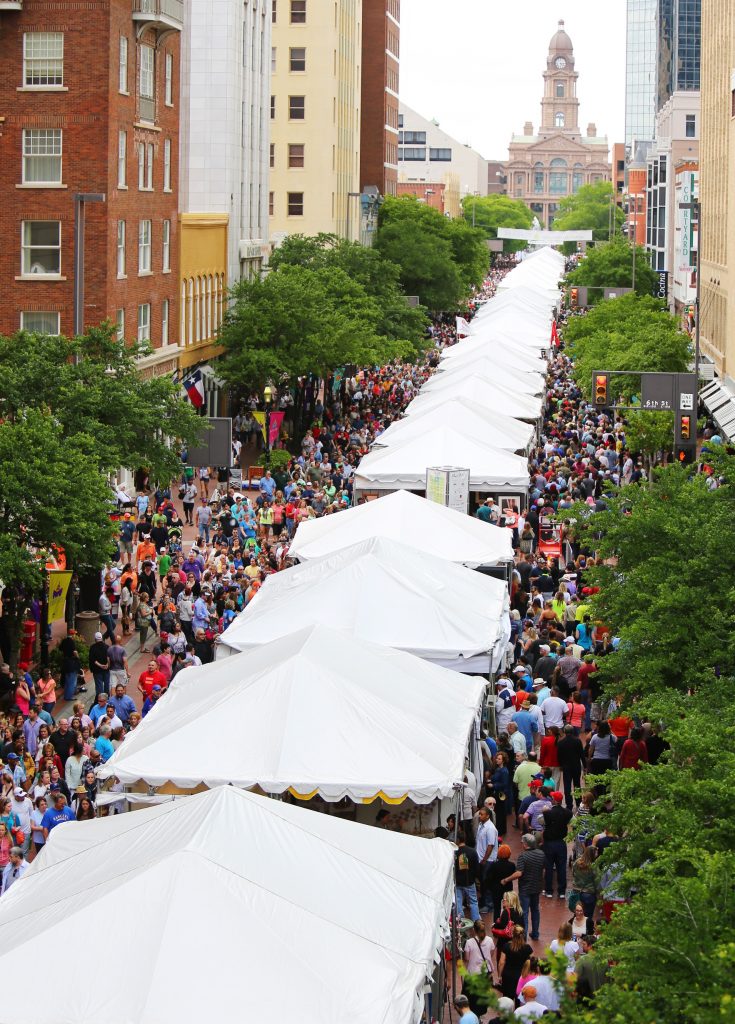 But beware: Participating in fairs—from neighborhood art festivals to prestigious American Craft Council shows—can be a taxing exercise, even in the best of times.
But beware: Participating in fairs—from neighborhood art festivals to prestigious American Craft Council shows—can be a taxing exercise, even in the best of times.
“When they’re good, they’re hard,” Marraccini says. “And when they’re not good, they’re even harder.”
Like Marraccini, Rebecca Myers participates in art fairs while also running her own brick-and-mortar retail store, Rebecca Myers Collection, in Baltimore.
“The standard way of doing business, of waiting for people to walk in your door, doesn’t seem to be a model that works very well anymore,” Myers says.
At these external events, the jeweler often finds an audience interested in the designer work ethic and appreciative of an artful aesthetic. “There’s a large portion of the jewelry market out there not serviced by the garden-variety jeweler,” says Myers, who pegs her average sale at about $1,100.
Over the years, Myers has also found something else at art festivals: an opportunity to expand her wholesale presence.
“If you have a distinct line, then participating in these fairs is a way to build your line or brand. You can get in front of influential people and land a whole new demographic in a completely different market,” says Myers, whose work is currently available in 10 boutiques and galleries across the country.
Jewelry designer Donna D’Aquino, who operates a gallery and teaching studio in Bethel, Maine, has been participating in shows for more than 15 years and says, in her experience, “95 percent of women at a fair stop and look at a jewelry booth.
“It doesn’t necessarily mean sales are happening,” D’Aquino cautions, “but they are stopping and looking.”
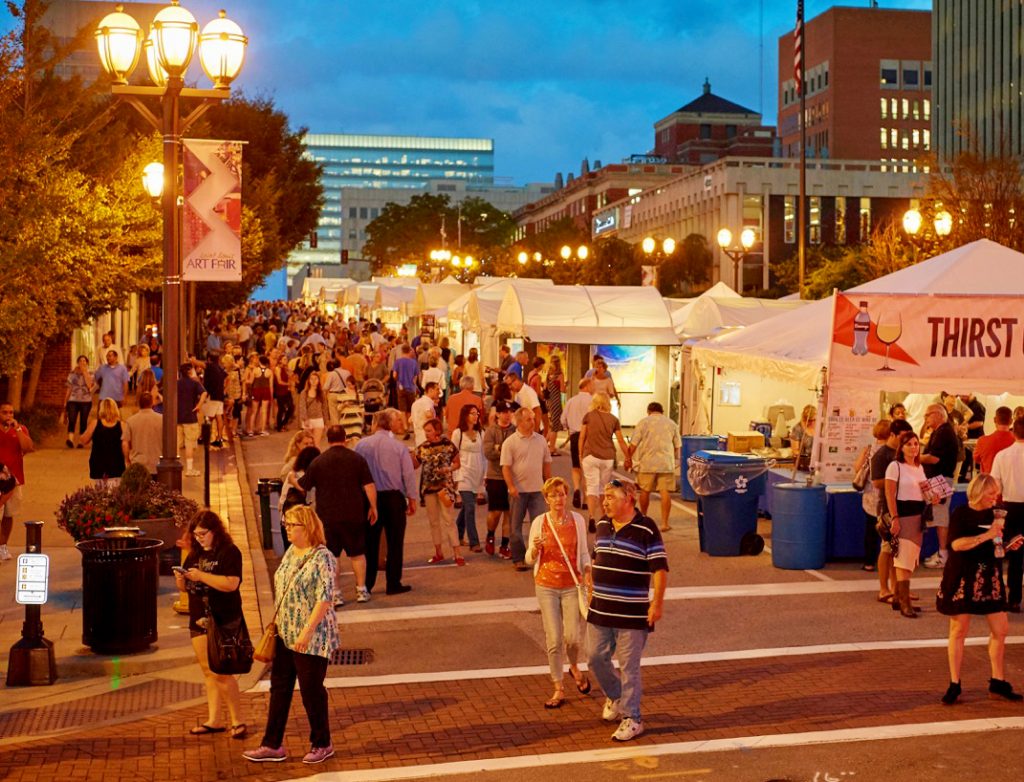 Getting a look, however, is half the battle, and one never knows who might walk into the booth. While D’Aquino has had some fair attendees scoff at the prices of her jewelry, she’s also had others “drop a king’s ransom.”
Getting a look, however, is half the battle, and one never knows who might walk into the booth. While D’Aquino has had some fair attendees scoff at the prices of her jewelry, she’s also had others “drop a king’s ransom.”
D’Aquino says the best part of being at art fairs is the creative energy swirling about. “There’s nothing like getting to know a community of artists,” she says. “It’s incredibly inspiring.”
Make no mistake, though. Participating in fairs is an investment of time, money, and energy—and with no guarantee of return on investment.
Shows come in all shapes and sizes. Some are neighborhood events that might produce only modest revenue but deliver a rich opportunity for local advertising and branding, especially for a brick-and-mortar jewelry store. Viewed through that lens, D’Aquino says, “that could be the best $100 or $200 you’ve ever spent.”
On the other end of the spectrum sit juried shows, which maintain strict quality standards.
“You need to make something amazing to get into these shows, and it needs to be work branded to you, not just inventory from your store,” Myers says.
Though there are certainly different levels of involvement, virtually any show will require preparation, setup, hours of smiling, and teardown.
“It’s amazing how much energy they require,” D’Aquino admits.
The Art Show Circuit
Here’s a smattering of the most prominent festivals around the country:
American Craft Council
Shows in Atlanta, Baltimore,San Francisco, and St. Paul, Minn.
612-206-3100
craftcouncil.org
St. James Court Art Show
Louisville, Ky.
502-635-1842
stjamescourtartshow.com
Saint Louis Art Fair
St. Louis
314-863-0278
saintlouisartfair.com
Cherry Creek Arts Festival
Denver
303-355-2787
cherrycreekartsfestival.org
Ann Arbor Street Art Fair
Ann Arbor, Mich.
734-994-5260
artfair.org
Main St. Fort Worth Arts Festival
Fort Worth, Texas
817-336-2787
mainstreetartsfest.org
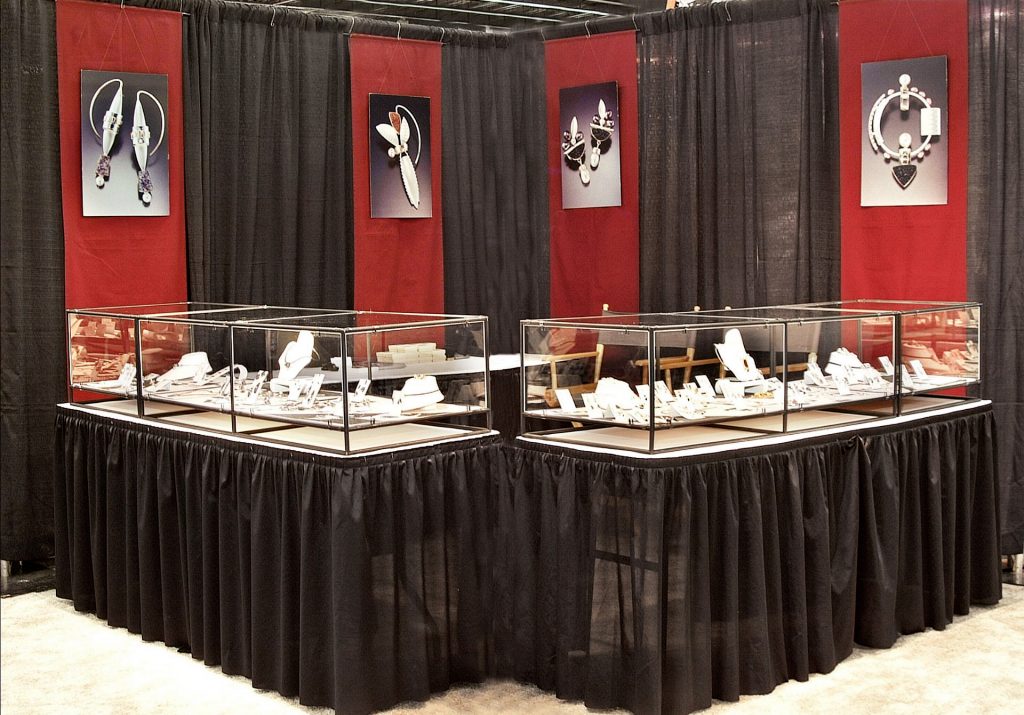
Art in the Pearl
Portland, Ore.
503-512-9071
artinthepearl.com
ArtFest Fort Myers
Fort Myers, Fla.
239-768-3602
artfestfortmyers.com
Central Pennsylvania Festival of the Arts
State College, Pa.
814-237-3682
arts-festival.com
Festival Essentials
If you’re heading to a festival to showcase your jewelry, don’t forget these five must-haves:
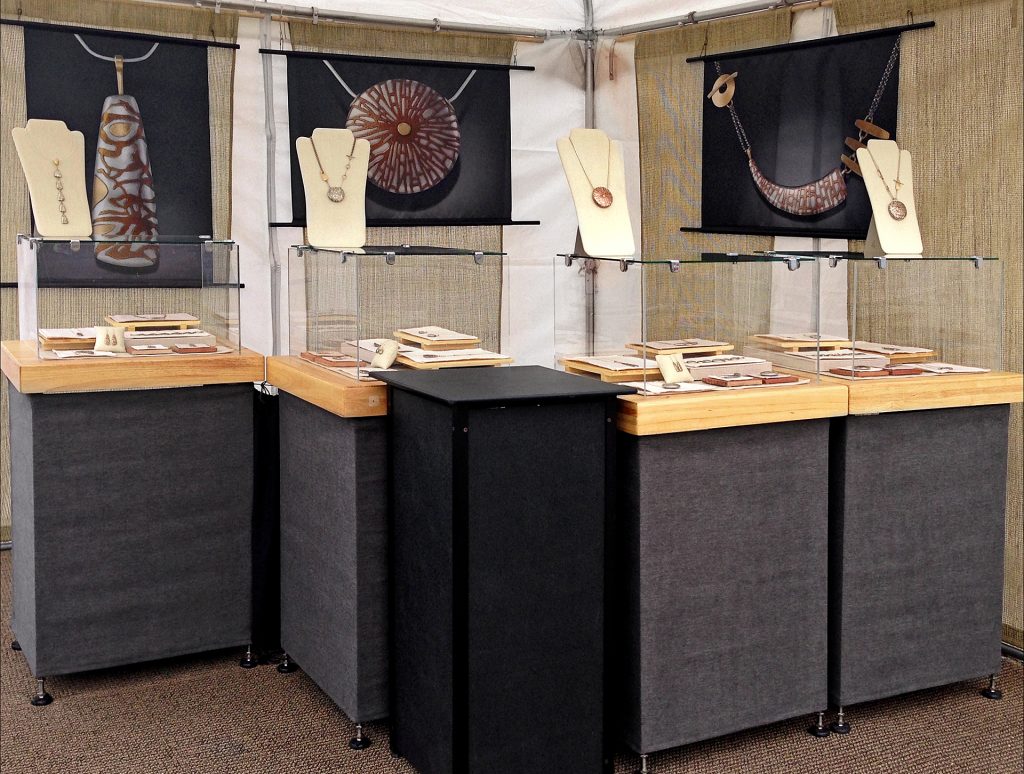
• Display cases: Clear cases ensure a professional presentation. Cases should always be locked and open only in the direction of the artist.
• Mobile point of sale: This not only enables credit card purchases but also limits the risk of carrying stacks of cash.
• Personal goods: From water and food to additional clothing, comfortable shoes, and a tall folding chair, be prepared for long days and—specifically at outdoor events—Mother Nature’s wrath.
• Business-branding items: Banner-size signage bearing vivid images of jewelry and your business name will brand your booth. Business cards, postcards, packaging, boxes, and bags further elevate the brand story.
• Custom order forms: In the spirit of capturing every potential sale, designers can use these forms to sketch a custom product and record order details like style number and customer information.
Tips and Tricks
Retailers familiar with the fair and festival circuit recommend jewelers considering participation heed some key advice:
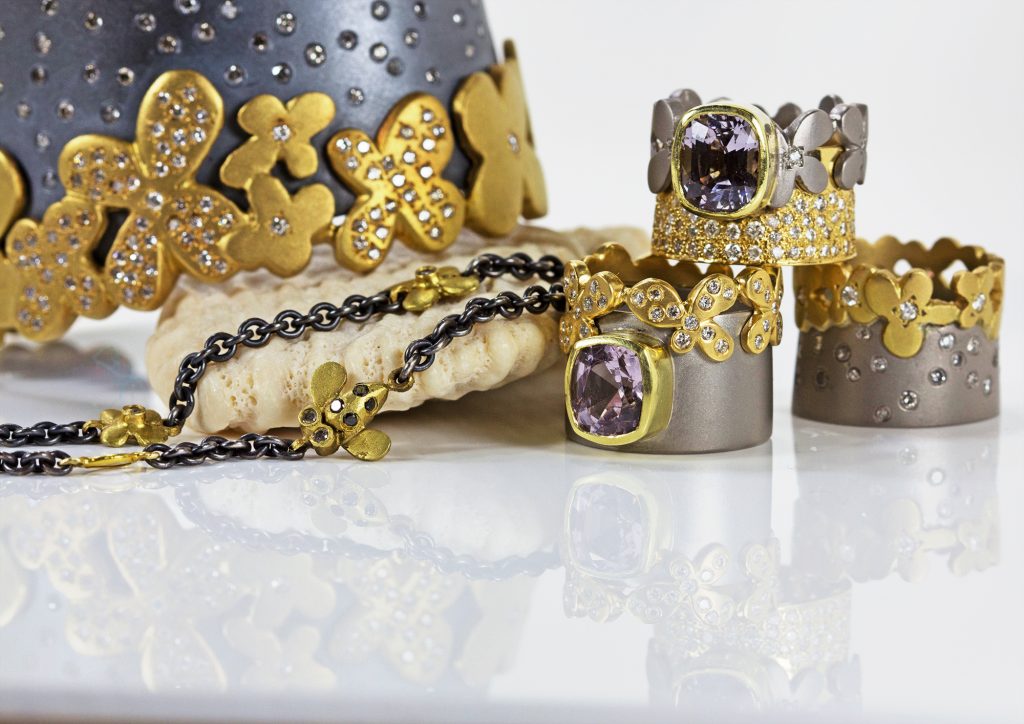
• Do your homework. Before participating in any show, Myers and D’Aquino both urge research. Visit a show, talk with other artists, observe a jewelry booth in action, and assess your jewelry’s fit with the show’s demographic. For instance, does the event attract a more trendsetting, avant-garde crowd? Or does it seem to appeal to more traditional tastes? “The venue down the street might cost $100 but not be worth your time, while another might cost $2,000 and require more travel, but be a wonderful opportunity,” D’Aquino says.
• Start small and local. Shows can be expensive, and it’s not uncommon to lose money, Marraccini says. For festival novices, he recommends starting out at “a lower level” and learning which items resonate. “To keep expenses down, you might also pick shows you can easily drive to,” he says.
• Offer a diverse assortment. Shows bring a wide range of customers, particularly on the financial front. D’Aquino suggests presenting a variety of price points and putting the most affordable pieces in a prominent place for all to see.
• Have a “sales star” present. While the retail store is, most often, a destination business where people come in for a purpose, shows require a different kind of energized salesmanship. “Shows are about engaging with people,” Marraccini says. “If you can’t do that yourself, then bring someone with you who can.”
• Gather information. Over the years, Marraccini has scored numerous sales from festival attendees well after a show. That’s why he likes to grab contact information for anyone showing special interest in his designs. “Then, do a follow-up,” he says.
• Be aware. Security remains a legitimate concern for show participants, and D’Aquino knows several artists who have been robbed. “There’s risk here,” she says bluntly. Being ever mindful of security, participants should have their products insured, have another set of eyes in the booth attuned to who’s around, and avoid being alone with inventory.
• Stay positive. Lulls and lackluster sales will happen. “Don’t get discouraged, and keep a positive head if things don’t go well,” Myers says. “Another opportunity might be steps away.”
From top: retailer and art-fair circuit regular Lee Angelo Marraccini; the Main St. Fort Worth Arts Festival, aka Main St.; the Saint Louis Art Fair, which runs Sept. 8–10; designer Beth Solomon’s booth at Art in the Pearl, which runs every Labor Day weekend; Art in the Pearl exhibitor Pam Caidin’s booth; pieces from Baltimore-based designer (and frequent fair participant) Rebecca Myers